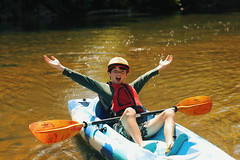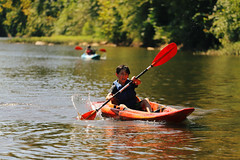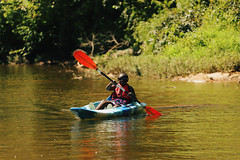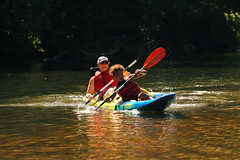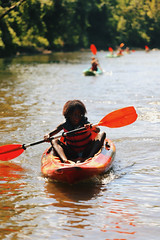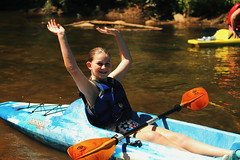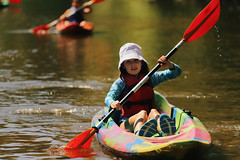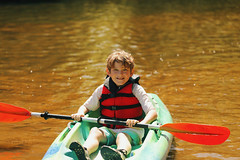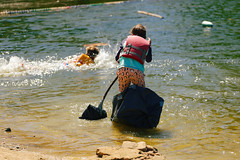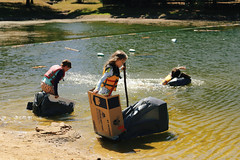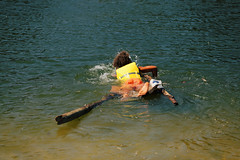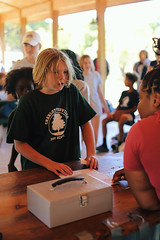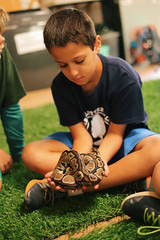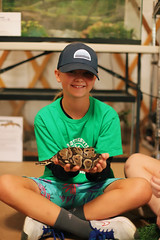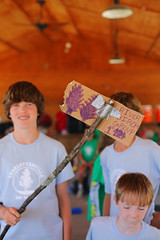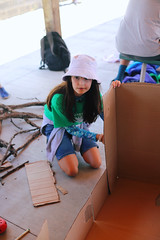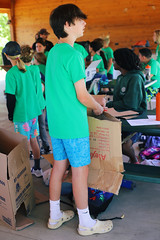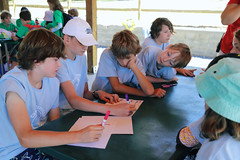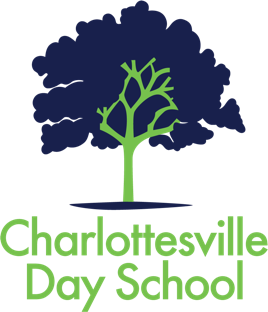Lower Elementary
The curriculum for first- and second-graders encourages independence in the classroom as students are encouraged to embrace their individual curiosities and passions.
Language Arts
Language arts in first and second grade is designed to empower children. As they begin to embrace their abilities as readers and writers, students discover firsthand that reading and writing skills provide the pathway for meaningful discovery in all subject areas. Students are encouraged to practice these skills in as many contexts as possible. Work in language arts is a balance between ensuring solid foundational knowledge and creating a deep passion for literature and the written word. During this time, students have the opportunity to work in a variety of learning environments, ranging from highly targeted small group reading to independent creative writing. They learn to grow their abilities in these areas as they gain comfort, problem solving skills, and independence under the watchful eye of skilled instructors.
Examples of Learning
- Teachers guide small group discussions and book clubs to foster a love of reading. Children curl up on pillows and hunker down in lofts as they get lost in literature.
- Students work on individualized spelling instruction. They then apply these skills to creative writing as they independently create and illustrate their own work during Book Making.
- Students receive whole group instruction on a variety of decoding strategies. They are also supported in small guided reading groups. The groups are flexible and fluid in order to follow the changing needs of every learner.
- Children apply their writing skills to a variety of genres, including persuasive writing, non fiction writing, biographies and myths and legends. Students use their own research regarding erosion to persuade the Head of School and Executive Director to improve the existing playscape
- Students develop sales pitches to sell handmade cards to raise money for refugees. They post their flyers around the school and understand that their written and spoken words impact the results.
Social Studies
Social Studies in first and second Grade expands upon the idea that you are not only a citizen of your immediate community, but play a role as a partner in a globally connected world. Through maps, stories, literature and photographs, First and Second graders explore the world around them that may not be immediately visible to them. Students grow their understanding that geography impacts religion, traditions, and holidays as they explore civilizations both past and present. Students design their own destiny when they choose a world leader who connects to their own interest and passion. Economics is an organic experience, as the Black and Brown Bears learn that economics and geography are intertwined with regards to resources, and that humans play an integral role in the economy while serving as producers and consumers. Our Economics projects contains a service component as students use the skills they have acquired to create a whole school market place. The funds raised are used to support local organizations in need.
Examples of Learning
- Students compare and contrast Native American civilizations based in North America. They determine the ways in which geography shaped the cultures of each group, and build dioramas that reflect their understandings.
- After reading a novel that centers around two siblings with rival lemonade stands, students plan and carry out their own after school stand. They advertise, divide the labor and reflect on the successes and struggles of the event.
- Students choose a world leader whose actions speak to their personal interests and passions. They are guided through the research process and create a biographical timeline that highlights the ways in which the contributions of this leader shaped history
- As they explore voting and civic participation, students listen to campaign speeches written by their peers. They then head to the polling center, organized and run by Middle School students, where they cast their ballots to determine what type of class celebration they will enjoy!
Math
Math in first and second grade encourages children to make connections between numbers, gain fluency and efficiency with their problem solving strategies, and be active members of a mathematical community. Joy abounds as students play games that develop not only specific skills in math, but connects them to one another and encourages cooperation and positive social interaction. Students in first and second grade focus heavily on ensuring they have a strong foundational understanding of the base ten system and place value. They begin to notice that mathematical skills are integral to being an active member of a thriving community. Students participate and thrive during mathematical experiences, including raising money for local non-profits and counting the change, or discovering the most efficient ways to share a tray of brownies with friends.
Examples of Learning
- Students research art from nations represented in our local refugee community, and create postcards to fundraise for International Neighbors. They sort, count, and calculate the total profits they earned during the project, discussing the most efficient ways to tabulate large sums of money
- Students research art from nations represented in our local refugee community, and create postcards to fundraise for International Neighbors. They sort, count, and calculate the total profits they earned during the project, discussing the most efficient ways to tabulate large sums of money
- Students design houses that would suit a beloved book character, based on certain requirements regarding size and shape.
- Students create a portfolio of zoo enclosures that address the needs of specific animals, and calculate the area and perimeter of the different habitats they design.
- Students participate in Number Talks, where they are encouraged and supported as they share their own problem solving strategy, then work together to find miscalculations or other ways of solving the same problem.
Science
Science in first and second grade focuses on giving children the specific and necessary scientific language that carries them through their elementary career and into Middle School. First and Second graders learn to build and then skillfully operate scientific tools like wind vanes and rain gauges. They use these instruments to gather data and reflect on their findings. Science is woven into Social Studies, Math and Language Arts as students begin to recognize the contributions and impact of great scientists. Students learn about the impact of science on their own community, as they develop solutions regarding their ever changing landscape and climate.
Examples of Learning
- During an exploration of the rock cycle, students were invited to the sandbox to dig for “fossils” in the style of an actual archaeological dig. Once the fossils are unearthed, they work backwards to try and explain how and why that fossil formed in its own unique way.
- Students are highly engaged as they use scientific discovery to explore their playground. Students collaborate in meaningful discussions to solve issues that immediately impact their daily play, and propose scientifically backed solutions to school administrators.
- After extensive research, students creatively design habitats that reveal their deep understanding of animal adaptations in their home state of Virginia. They compare their findings to other animals around the globe.
- Students emulate animal habits to discover how adaptations impact daily activities. For example, students experiment eating without using their hands to understand why bears’ snouts are unusually flexible.
Spanish
Foreign language learning improves listening abilities, memory function, creativity, and critical thinking skills. The CDS foreign language curriculum is actively taught and integrates speaking, reading, writing, listening and cultural activities. Elementary students learn Spanish vocabulary and communicative expressions.
